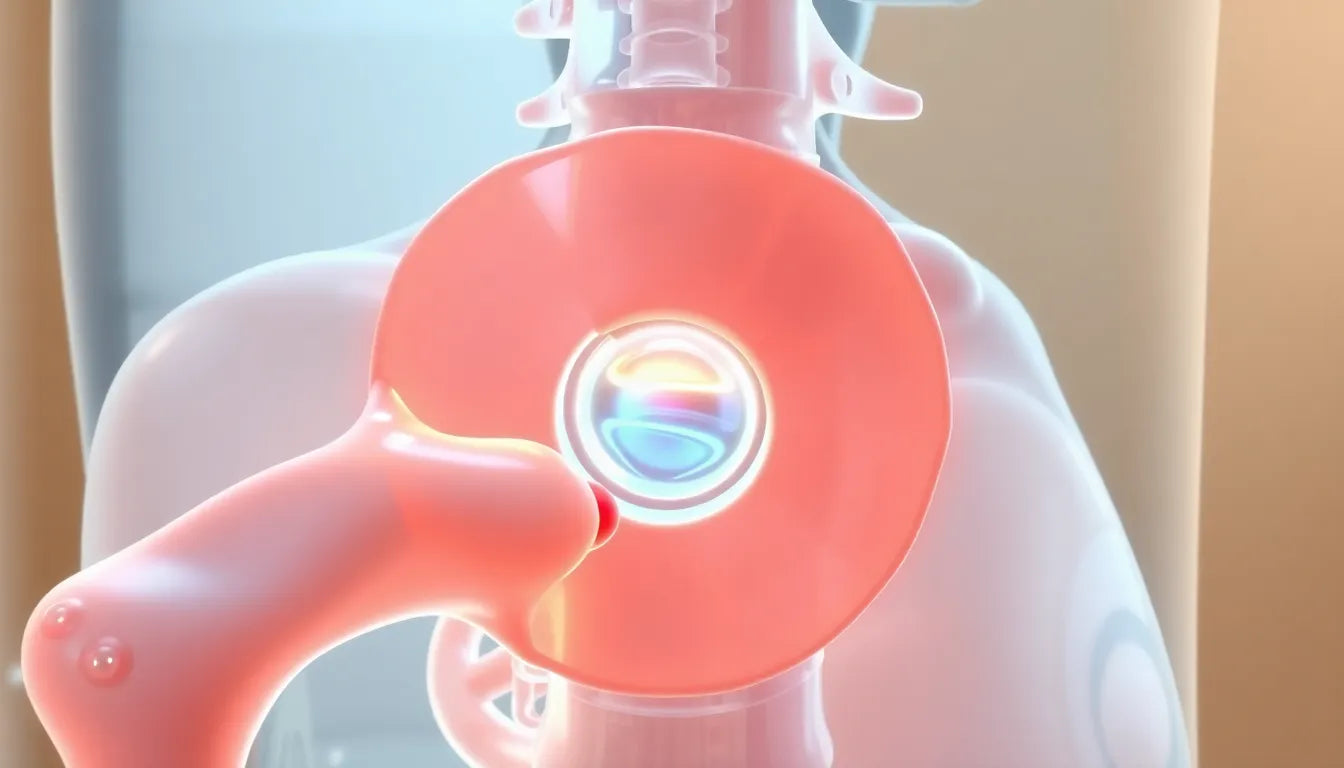Sciatica pain is a common yet often misunderstood condition that can significantly impact one's quality of life. It is characterized by pain that radiates along the sciatic nerve, which extends from the lower back down through the hips and buttocks and along each leg. This discomfort can range from mild to severe, affecting daily activities and overall well-being.
Understanding the causes of sciatica pain
The root causes of sciatica pain can vary, with some of the most prevalent being a herniated disk, a bone spur on the spine, or spinal stenosis, which is a narrowing of the spine. These conditions can compress the sciatic nerve, leading to the characteristic pain and discomfort. Addressing sciatica pain is crucial, not only to alleviate immediate discomfort but also to prevent long-term complications that can arise from neglecting treatment.
The quest for effective relief
For many individuals suffering from sciatica, finding effective relief can be a daunting task. The pain can be persistent and challenging to manage, leading many to seek various methods and treatments in hopes of finding respite. This blog post aims to serve as a comprehensive guide, offering insights and strategies to help alleviate sciatica pain through a variety of approaches. Whether you're dealing with acute episodes or chronic discomfort, understanding your options is the first step toward finding relief.
In the sections that follow, we will explore different techniques and treatments, from stretching exercises to quick relief methods and massage techniques, all designed to help you manage and reduce sciatica pain. By understanding the underlying causes and exploring a range of solutions, you can take control of your pain and improve your daily life.
Stretching exercises for immediate relief
One of the most effective ways to alleviate sciatica pain is through targeted stretching exercises. These exercises can help relieve tension in the muscles surrounding the sciatic nerve, providing immediate relief from discomfort. Healthline recommends several stretches that are particularly beneficial for those suffering from sciatica. The glute stretch, for example, targets the gluteal muscles, which can often contribute to sciatic nerve pain. Meanwhile, the sitting spinal stretch helps in elongating the spine and relieving pressure on the nerve. Another effective exercise is the basic seated stretch, which aids in improving flexibility and reducing tension.
It's crucial to practice these stretches correctly to avoid further injury. Consulting with healthcare professionals can ensure that these exercises are performed safely and effectively. Visual aids, such as diagrams or instructional videos, can also be beneficial in guiding you through each stretch. By incorporating these exercises into your routine, you can experience significant relief from sciatica pain.
Quick relief methods for sciatica pain
For those seeking immediate sciatica pain relief, several quick methods can be employed. According to MyMosh, alternating between hot and cold packs can be particularly effective. Cold packs help reduce inflammation and numb the sharp pain, while hot packs relax tense muscles and improve blood flow to the affected area. Over-the-counter medications, such as ibuprofen or acetaminophen, can also provide temporary relief. However, it's important to use these medications responsibly and be aware of potential side effects.
Alternative therapies, like acupuncture and massage, offer additional avenues for pain management. Acupuncture involves inserting thin needles into specific points on the body to stimulate nerve function and alleviate pain. Massage therapy, on the other hand, can help reduce muscle tension and promote relaxation. Physical therapy is another long-term strategy that not only addresses pain but also strengthens the muscles supporting the spine, preventing future episodes of sciatica.
Massage techniques for holistic relief
Massage therapy is a holistic approach that can provide significant relief from sciatica pain. HSSH Health highlights several massage techniques that target the muscles and tissues around the sciatic nerve. Myofascial release, for instance, involves applying gentle pressure to the connective tissues to release tension and improve mobility. Sacrum pressure relief focuses on the sacrum area to alleviate lower back pain, while the gluteus minimus massage targets the buttocks to reduce sciatic nerve pressure.
Self-massage can be a convenient option for those looking to manage their pain at home. Using a tennis ball or foam roller, you can apply pressure to sore areas and work out muscle knots. However, for more comprehensive treatment, professional massage therapy can be invaluable. A trained therapist can employ advanced techniques to address specific problem areas and provide deeper relief. Including a table that compares different massage techniques and their benefits can help readers choose the most suitable option for their needs.
By integrating these stretching exercises, quick relief methods, and massage techniques into your routine, you can create a comprehensive approach to managing sciatica pain. This holistic strategy not only addresses immediate discomfort but also contributes to long-term relief and prevention of future flare-ups. In the next section, we will explore how combining these methods with lifestyle changes and ergonomic solutions can further enhance your path to recovery.
Integrated Approach to Sciatica Pain Relief
Effectively managing sciatica pain often requires a multifaceted approach that combines various treatment methods. By integrating stretching exercises, quick relief techniques, and massage therapy, individuals can develop a comprehensive plan that addresses both immediate discomfort and long-term management. Stretching exercises, as previously discussed, help alleviate tension in the muscles surrounding the sciatic nerve. Quick relief methods, such as hot and cold therapy, provide immediate pain reduction, while massage techniques offer holistic benefits by targeting muscle tension and promoting relaxation.
This integrated approach not only provides symptomatic relief but also helps in preventing future flare-ups. Regular practice of these methods can strengthen muscles, improve flexibility, and enhance overall spinal health. By adopting a holistic strategy, individuals can create a sustainable routine that supports long-term well-being and reduces the recurrence of sciatica pain.
Prevention and Long-term Management
Preventing sciatica flare-ups involves making lifestyle adjustments that support spinal health and reduce strain on the sciatic nerve. Ergonomic changes in daily life, such as using supportive chairs and back supports, can significantly impact comfort and pain levels. Anodyne offers a range of ergonomic products designed to enhance posture and minimize stress on the lower back, making them an excellent addition to any sciatica pain relief plan.
Incorporating regular exercise into your routine is another crucial aspect of long-term management. Activities like walking, swimming, and yoga can improve muscle strength and flexibility, contributing to overall spinal health. Maintaining a healthy weight is equally important, as excess weight can increase pressure on the spine and exacerbate sciatica symptoms. By combining these lifestyle changes with the previously mentioned treatment methods, individuals can effectively manage their sciatica pain and improve their quality of life.
Frequently Asked Questions
What is the fastest way to relieve sciatica pain?
For quick relief from sciatica pain, methods such as applying hot and cold packs can be effective. Cold packs help reduce inflammation, while hot packs relax tense muscles and improve blood flow. Over-the-counter medications like ibuprofen can also provide temporary relief, but it's important to use them responsibly.
Can sciatica go away on its own?
Sciatica can sometimes resolve on its own, especially if the underlying cause is mild. However, if symptoms persist or worsen, it's advisable to seek medical advice to explore further treatment options and prevent complications.
How can I prevent sciatica from recurring?
To prevent sciatica from recurring, focus on maintaining a healthy lifestyle with regular exercise and ergonomic adjustments in your daily environment. Using ergonomic aids, such as supportive chairs and back supports, can also help reduce strain on the sciatic nerve.
Is walking good for sciatica?
Walking can be beneficial for sciatica as it promotes circulation and strengthens the muscles supporting the spine. However, it's important to walk at a moderate pace and avoid overexertion. Listen to your body and stop if you experience increased pain.
When should I see a doctor for sciatica pain?
If you experience severe pain, numbness, or weakness in your leg, or if your symptoms do not improve with self-care measures, it's important to consult a healthcare professional. They can provide a proper diagnosis and recommend appropriate treatment options.


















